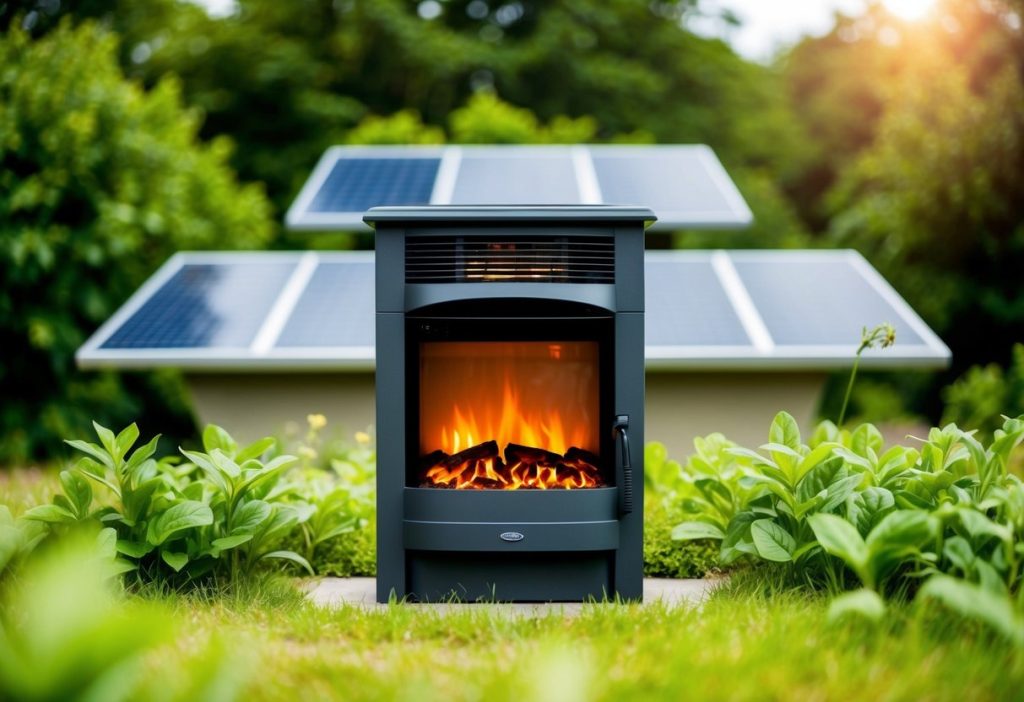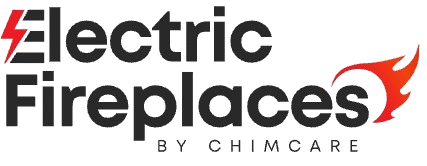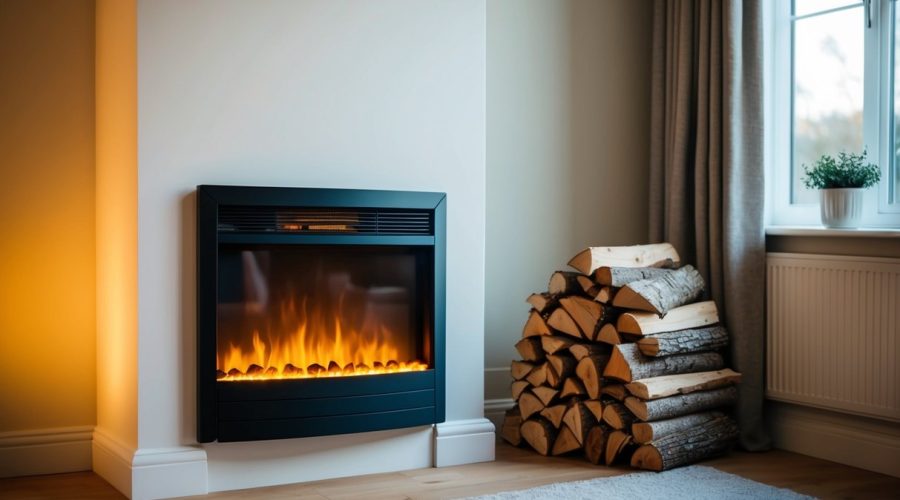The Environmental Benefits of Switching to Electric Fireplaces
As we continue to seek sustainable alternatives for everyday living, electric fireplaces have emerged as a compelling option for those looking to reduce their environmental footprint. Traditional wood-burning fireplaces contribute to air pollution and deforestation, whereas electric fireplaces offer a cleaner, more sustainable solution. Switching to electric fireplaces significantly reduces carbon emissions and decreases our reliance on fossil fuels.
The beauty of electric fireplaces lies not just in their environmental benefits but also in their practicality. They are incredibly easy to install and maintain, with no necessity for chimneys, venting, or wood storage. This convenience does not come at the expense of safety, as electric fireplaces are safer for both users and their homes, eliminating risks like chimney fires and indoor pollution.
Moreover, making the switch to electric fireplaces can lead to economic savings over time. While the initial investment may be a consideration, ongoing maintenance and energy costs are often lower than those associated with traditional fireplaces. This makes electric fireplaces an attractive option for the environmentally conscious, budget-savvy consumer.
Key Takeaways
- Electric fireplaces reduce carbon emissions and fossil fuel use.
- They offer practical benefits such as easy installation and maintenance.
- Lower energy and maintenance costs contribute to long-term savings.
Understanding Electric Fireplaces
Electric fireplaces provide a cleaner and more energy-efficient alternative to traditional fireplaces. They use advanced technology to simulate flames and generate heat while offering ease of use and installation.
Technology Behind Electric Fireplaces
Electric fireplaces operate using LED lights and infrared or fan-forced heaters. The LED lights imitate the appearance of real flames, which can be adjusted in brightness and color. The infrared or fan-forced heaters provide the heat, capable of warming spaces quickly and safely.
With no requirement for a chimney or venting, installation becomes straightforward, often involving just plugging into a standard electrical outlet. Many models come with remote controls and adjustable settings, allowing customization of flame appearance and heat output, making them adaptable to our needs and preferences.
Comparison with Traditional Fireplaces
Traditional fireplaces rely on burning wood or gas to produce heat, which results in emissions and requires regular maintenance. In contrast, electric fireplaces emit no smoke or pollutants, reducing environmental impact significantly. There’s no risk of fumes or carbon monoxide, making them safer indoors.
Maintenance is minimal, with no chimney cleaning or wood storage needed. Operating costs are generally lower, as they are powered by electricity, reducing fuel expenses. While they may not replicate the full ambience or scent of a wood-burning fire, electric models offer flexibility and convenience that appeal to modern homes.
Environmental Advantages

Switching to electric fireplaces offers significant benefits for the environment by lowering emissions and improving energy efficiency. These advantages contribute to a more sustainable and eco-friendly lifestyle.
Reduced Emissions and Air Quality
Electric fireplaces do not produce combustion emissions. This absence of combustion is crucial for reducing pollutants such as carbon monoxide, which is harmful to air quality. Without the need for burning wood or gas, electric models lower the emission of particulates that contribute to smog and indoor air pollution.
Enhancing air quality in our homes and communities becomes achievable when we opt for electric options. In urban areas, this shift means a considerable reduction in air pollution, offering us a cleaner and healthier environment. Our choice can significantly impact health, making electric fireplaces a more responsible option.
Energy Efficiency and Sustainability
Electric fireplaces convert nearly all the energy they consume into heat, achieving close to 100% efficiency. There is minimal energy wastage, which stands in contrast to traditional fireplaces where much of the heat escapes through the chimney. This efficient energy use helps us lower our carbon footprint.
Sustainability is another attractive feature of electric fireplaces. Since these devices do not rely on wood or gas, they help reduce demand for fossil fuels and deforestation. Smart energy management is possible with features like programmable thermostats and remote control operations. By using electricity from renewable sources, our choice becomes even more sustainable, further mitigating environmental impact.
Economic Benefits
Switching to electric fireplaces can lead to significant financial advantages. These include long-term cost savings and the availability of various incentives and rebates that reduce initial investment costs.
Long-Term Cost Savings
Electric fireplaces are more efficient than traditional wood or gas fireplaces. They require less maintenance, which reduces ongoing expenses. Since they convert nearly all electricity into heat, energy waste is minimized. Additionally, because they don’t require chimney cleaning or inspections, homeowners notice a reduction in annual upkeep costs.
Operational expenses are predictable with electric fireplaces. They don’t depend on fluctuating fuel prices like wood or gas fireplaces. This predictability helps us budget effectively for home heating, leading to economic stability and fewer unexpected expenses.
Incentives and Rebates
Many regions offer rebates and tax credits to encourage the installation of electric fireplaces. These incentives can significantly lower the upfront costs. For homeowners, this means faster payback on their investment.
Local and federal programs are available for homeowners transitioning to energy-efficient appliances. We should explore available opportunities to leverage these incentives. By checking with energy providers and local government websites, we can identify programs that offer financial assistance for making sustainable home improvements like electric fireplaces.
Installation and Maintenance

Switching to electric fireplaces offers advantages such as straightforward installation and minimal upkeep. These aspects make electric fireplaces an appealing choice.
Ease of Installation
Installing an electric fireplace is simple, often requiring no professional assistance. Most units are plug-and-play, needing only a standard electrical outlet. For wall-mounted or recessed models, following the manufacturer’s instructions closely is crucial.
A typical installation might entail mounting brackets, which can be completed in under an hour. There’s no need for venting or special permits, unlike traditional fireplaces. This simplicity makes electric options particularly convenient for renters or those desiring flexibility.
Maintenance Requirements
Electric fireplaces require less upkeep than their wood-burning counterparts. There’s no ash or soot to clean, reducing time and effort. Regular maintenance primarily involves periodic dusting and ensuring vents are unobstructed.
The LED lights and heating elements in electric fireplaces tend to have long service lives, minimizing replacement needs. It’s advisable to occasionally check the power cord and connections for wear and tear. Keeping the exterior clean will prolong the unit’s appearance and functionality.
Consumer Health and Safety

Switching to electric fireplaces offers notable advantages for consumer health and safety. These units enhance indoor air quality and come equipped with significant safety features, minimizing risks often associated with traditional fireplaces.
Improving Indoor Environmental Quality
Traditional fireplaces can release smoke, soot, and harmful particulates, negatively affecting air quality. In contrast, electric fireplaces eliminate these emissions. By operating without combustion, they reduce exposure to pollutants like carbon monoxide, which poses serious health risks.
Electric fireplaces also maintain more consistent indoor temperatures without producing ash or residue. This contributes to a healthier home environment. Asthma and allergy sufferers may particularly benefit from the improved air quality, experiencing fewer respiratory irritations. Our choice to switch can considerably influence our overall well-being.
Safety Features of Electric Fireplaces
Electric fireplaces are built with multiple safety features that make them a secure choice for home heating. Many models are equipped with automatic shut-off features, which activate in case of overheating, preventing potential fire hazards.
Units often come with cool-to-the-touch glass, mitigating the risk of burns, especially for homes with young children or pets. Tip-over protections and secure wall mounts enhance their stability. In addition, remote controls and programmable thermostats offer easy and safe temperature management. With these features, we gain not only warmth but also peace of mind.
Frequently Asked Questions
Electric fireplaces offer several environmental benefits. They provide efficient home heating, improve indoor air quality, and play a role in reducing household carbon emissions.
What are the primary environmental advantages of using an electric fireplace?
Electric fireplaces eliminate the need for burning wood, thus reducing deforestation. They produce no emissions, making them cleaner for the environment compared to traditional fireplaces. By utilizing electricity, often from renewable sources, they offer a greener option for home heating.
How does electric fireplace efficiency compare to traditional wood-burning units?
Electric fireplaces convert almost all their energy into heat, achieving near 100% efficiency. In contrast, wood-burning fireplaces lose a significant portion of their heat through chimneys. This makes electric units more efficient at delivering warmth to a home.
Can electric fireplaces contribute to reducing household carbon emissions?
Yes, electric fireplaces can significantly lower household carbon emissions. By using electricity—especially if sourced from renewables—they bypass the combustion process that generates carbon dioxide. This leads to a smaller carbon footprint compared to wood or gas units.
How does the use of electric fireplaces impact indoor air quality?
Electric fireplaces improve indoor air quality as they don’t produce smoke, soot, or ash. Unlike wood-burning fireplaces, they don’t emit harmful particulates into the home, creating a healthier living environment.
What is the lifecycle environmental impact of an electric fireplace?
The environmental impact of electric fireplaces is generally lower over their lifespan. They require minimal raw materials and manufacturing processes compared to traditional units. Since they don’t generate emissions during operation, their environmental impact remains relatively low.
Do electric fireplaces contribute to energy conservation in home heating?
Electric fireplaces allow targeted heating, enabling us to warm specific rooms rather than the entire home. This zone heating approach can conserve energy, as we’re able to lower overall heating use. This makes them an efficient choice for supplementing home heating.


